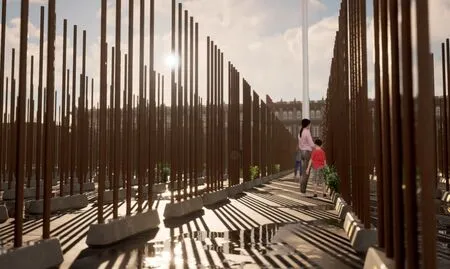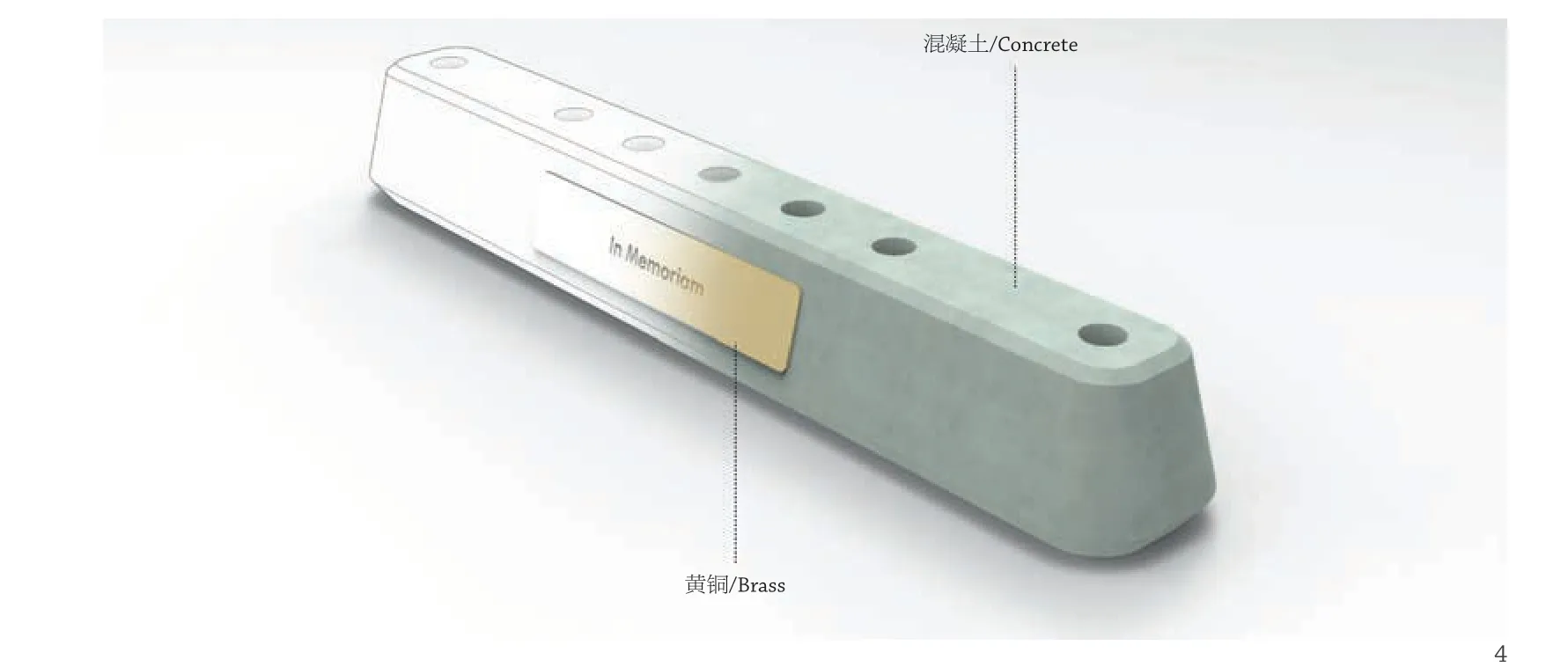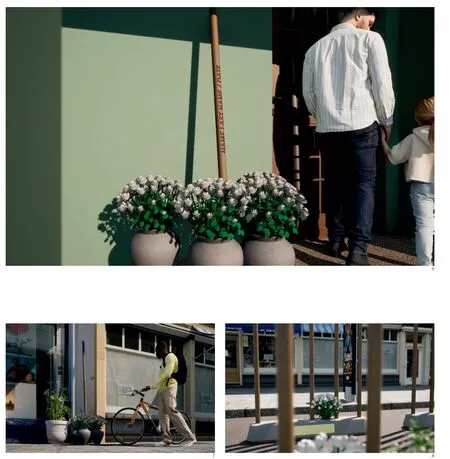哀悼宣言纪念碑,纽约,美国
2020-12-26建筑设计罗赫金德建筑事务所
建筑设计:罗赫金德建筑事务所

1 广场/Square
失去了赋予世界的表象,失去了围绕个人理解对现实设定的叙述,好客的概念是否还存在?我们是否还可能欢迎他人的到来?我们应该停止以自己的方式理想化他人了 。
我们担心,疫情的蔓延将会把人变成可供管理的物体,而对自己身体的主宰不过是个自由主义幻想。我们用生物政治学的观点来看待伦理问题,认为生命是无法管理的。
我们思考,在这场疫情危机中,我们应该如何欢迎别人,如何创造好客的氛围?如何看待管理之外的事物?我们的直觉使我们要求获得埋葬死者的权利,我们认为这是反对生物政治禁锢的关键。
坟墓是我们生命的最后见证。设计和建筑可以负责将那些让生命措手不及、让数十万人丧生却来不及哀悼的迹象具体化。我们主张哀悼的行为。我们至少可以做到这一点,建造一些符号,在那里我们可以放置我们的生命和他人的生命的见证。试想,我们可以通过一种方式,让这些可怕的死亡成为共同的记忆,通过充满墓碑的城市来纪念他们的生命。
这并不是国家为管理社会情绪而要创造的纪念日或是树立的纪念碑。它是关于建立简单的墓碑,让活着的人看护我们的死者,并将墓地延伸到城市内部,紧邻他们的家。我们努力创造一种关于死亡的感觉,表现出一种社会必要性,对“另一个人”的死亡承担责任,每一个在任何国家死亡的“另一个人”,不分出身、种族、性别、宗教、政治观点或移民身份。
我们以纽约时报广场和墨西哥城宪法广场为例,构思临时装置。包括在这些地点放置纪念碑,纪念所有逝者的名字。在经过数星期的社会哀悼之后,我们鼓励逝者的亲朋将相应的纪念碑放到他们家的人行道旁,使哀悼活动延伸到城市各居民区。
我们可以在感受他人痛苦的过程中分享我们的痛苦。(阿图罗·奥尔蒂斯·斯特拉克 文,钱芳 译)

2 街道/Street
We question the notion of hospitality and the possibility of welcoming others without an imposed representation of the world, without a narrative setting a reality around an individual understanding of things. We should stop idealising others in our terms.
We worry about the way a pandemic disease could bring a situation in which humans can be seen as objects to be managed, but sovereignty over our bodies is just a liberal illusion. We approach that the ethical problem with a biopolitical view, and think that life cannot be managed.
We speculate on how we should welcome others in this pandemic crisis. How to create hospitality? How to see things beyond the management? Our intuition leads us to demand the right to bury our dead, which we understand as the key against biopolitical confinement.
A grave is the last testimony of our life. Design and architecture can be in charge of materialising the signs that took life by surprise and killed hundreds of thousands without allowing a space for mourning. We are claiming the act of mourning. We can at least take care of that, of building symbols where we can place the testimony of our life and the lives of others. Imagine a way through which we can bring these terrible deaths to shared memory, honoring their lives through cities filled with cenotaphs.
It is not about creating memorials or monuments that the state appropriates to manage social sensibilities. It is about creating simple cenotaphs that allow the living to watch over our dead and extend the cemetery inside the city, next to their homes. We strive to create a sensibility about death, displaying a social necessity to assume responsibility over the death of "another", any "other" who died in any country, without regards to origin, race, gender, religion, political views, or migratory status.
We conceptualise ephemeral installations in Times Square in New York, and in Mexico City's Zocalo as examples. They consist of placing in these locations a cenotaph dedicated to all of those that have died, with their names. After some weeks of social mourning, we encourage families and friends to participate and take the corresponding cenotaph to the sidewalks of their homes. The mourning extends to the neighbourhoods of each city.
We can share our pain in the pain of the others. (Text by Arturo Ortíz Struck)

3 分解/Diagram

4 底座/Base
项目信息/Credits and Data
功能/Programme: 社交/Social
状态/Status: 方案/Project
地点/Location: 美国纽约时报广场(可能拓展到其他城市)/Times Square, New York City, USA (with possible expansion to other cities)
设计时间/Design Time: 2020
绘图/Drawings: Diego Díaz Lezama

5 剖面/Section

6-8 纪念结束之后/After memorial
